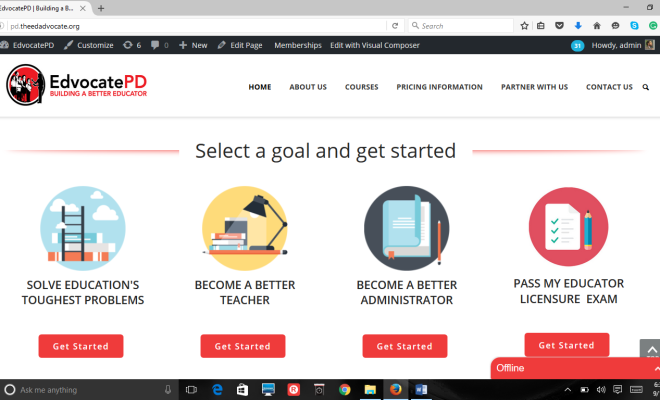Body Language: What it Has to Say

Body language is a non-verbal message being demonstrated by the body through movements, facial expressions, voice tones, and volume. Because these bodily actions and expressions are almost automatically done by the person even if they are not conscious of it, body language can be a reliable source of information for us to read the mood, motivation, and openness of the person being observed.
How to Read People
Our body reacts to different stimuli, not just for protection. It also does certain movements and mannerisms in situations like when we are nervous, we tap our foot, or shake our leg when we are bored or thinking deeply. Or, when we see the teacher crossing arms, we perceive it to be strict and angry. Averted stares convey a message too. Breathing patterns also may help us indicate how the person is feeling as well. Our body language can also send messages too. Hence when we become aware of our actions, we can learn to control them and become skilled in reading other people.
How can I start learning to read body language?
Facial expressions can be a great place to start. Glances, arching eyebrows, and smiles can indicate that the person is welcoming. If they are seated close to you or if they keep on fidgeting can also send messages too.
How can we tell if someone is attracted to you?
Smiles, eye contact, friendly gestures like a light hand on your shoulder, and light push during an exchange of laughter can be good signs of attraction. When a person is leaning toward you or repeatedly touches your arm can also be indicated that the person is into you.
What is mirroring?
Mirroring is a common form of body language wherein the person mimics someone’s mannerisms and gestures. A person can build rapport when they mirror or imitate others. Interestingly, this body language is mostly done unconsciously.
Is mirroring used in persuasion?
Salespeople use this technique to convince others to buy their products. This is because when you mirror, you pay close attention to the other person, which is a good thing to do when you are in a conversation. When you listen, observe, and then mimic, you will yield positive responses.
Is mirroring a sign of attraction?
People in a relationship are seen to have similar word expressions, mannerisms, and actions because they mimic one another. This only happens when people really like each other and have spent time together.
What does a tilted head convey?
A tilted head may indicate sincerity. This is true with babies. A person who tilts their head as they interact relaxes the baby. With people are in love, they usually tilt their heads as a sign of vulnerability, trust, and sincerity.
How do your eyes express emotion?
The eyes are indeed the window to the soul. You can tell a lot by looking at a person in the eye. When a person covers their eyes, they might be worried or frustrated. When they roll their eyes, they find the comment annoying or a waste of their time. Blinking can also be an indicator of embarrassment. And of course, the astonished, surprised, or scared feeling can be seen in a person when they open their eyes wide.
What does touching your neck mean?
A person feels pacified when they stroke their neck. That is why rubbing is suggested when the child feels sick or tense. In fact, rubbing the fleshy area under our chin helps in lowering our heart rate because of its calming effect.
What do different hand gestures mean?
The hands go along when the person speaks. A person feels confident when the spaces between their fingers grow. Hands rubbing consistently may convey nervousness and stress.
What is conveyed with a light touch?
Light touch may mean differently in many cultures. For instance, a slight touch on the arm indicates trust. The British and the Americans would hardly touch, while the French and the Puerto Ricans freely touched while interacting. Light touches also tell the other to feel comfortable and to loosen up.
What can crossing your leg indicate?
Crossing your leg while standing is a good way to tell the person that you are interested in what they have to say. This will help the other person feel comfortable opening up with you.
How do you show that you are neutral about something?
A steady stare seated with hands on the lap may be a good way to convey that you are feeling neutral about something.
What is the right way to shake hands?
A firm handshake while making eye contact with a smile is a good way to shake hands and make others feel welcome and valued. Do not squeeze it; just the right kind of grip is enough.
How can we misinterpret body language?
Body language and gestures can mean a lot of things. Crossed arms, for instance, can mean anxiety or authority for some. Some may feel intimidated when they see someone crossing their arms, while others do it because they are feeling insecure. Some may interpret it as a refusal to cooperate.
Do all non-verbal behaviors serve a purpose?
Most of the time, yes, they do. Self-soothing gestures and freeze responses done by primates are made by instinct to cope or interact with a given stimulus. Touch can tell a lot; in fact, even the blind engage with them. Teachers in early childhood are trained to spot non-verbal cues from young kids to know what they want to say or how they are feeling since some kids are still growing in their speaking skills.
What do the shoulders convey?
Roman and Greek males display dominance, strength, and vitality with their wide shoulders and narrow hips. Nowadays, holding each other’s shoulders indicate camaraderie.
How can you tell if someone is in distress?
Extreme stress can be shown in the way a person sits or in the body positions they do. Fetal positions, rocking back ad forth, and freezing in place are examples of reserved behaviors. Facial expressions also may indicate distress, like lip sucking and purses.
Why can’t I hide how I’m feeling?
Our brain processes our feelings and body movements. The brain’s limbic system processes our emotions, thoughts, and intentions, and then our body manifests them. Reactions may be expressed verbally, but more often than not, our body is capable of revealing how we feel.






